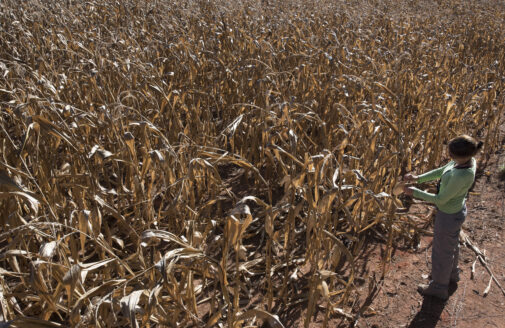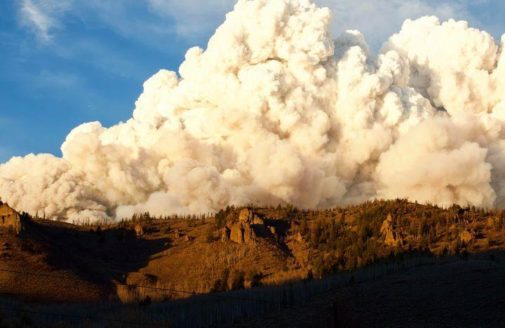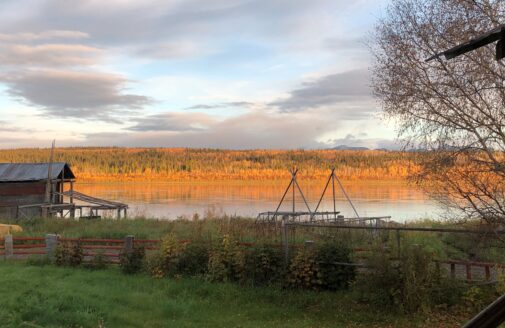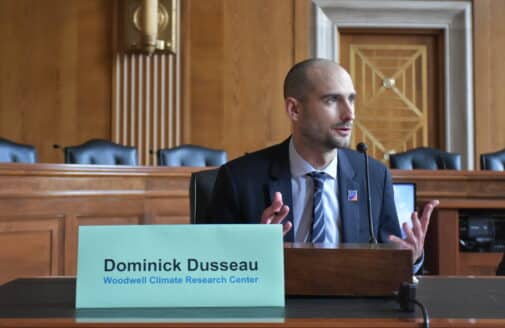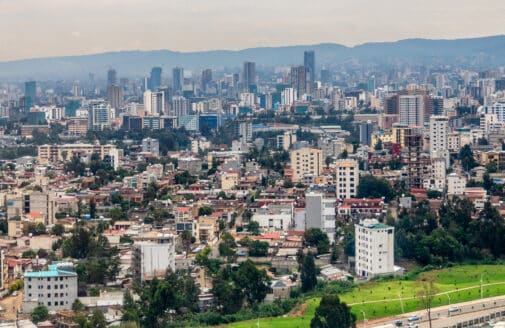Fires, heatwaves get an early start this year
In some places, an extreme summer has already begun
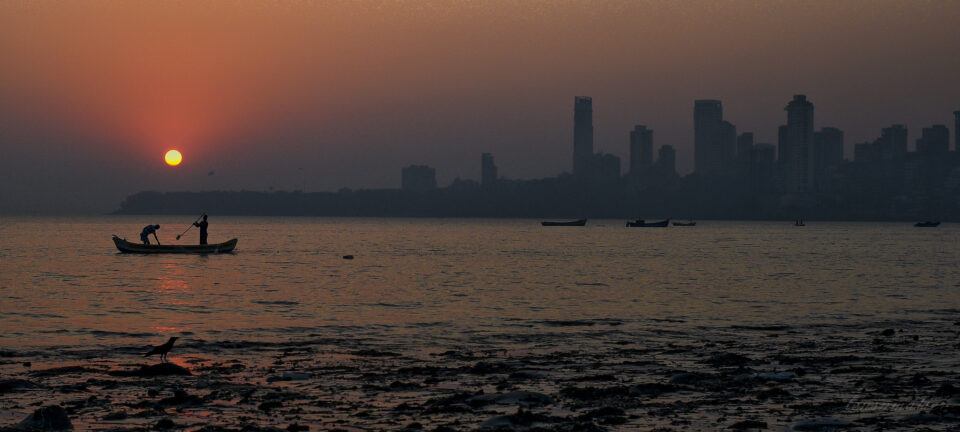
Sun sets over Mumbai, the most populous city in Maharashtra state that has been hit hard by the heatwave.
photo by lensnmatter (CC BY-NC-ND 2.0)
Springtime in the Northern hemisphere is a momentary respite for many places—a pause before the heat of summer and potential for drought and fire. This year, however, summer arrived early, bringing with it scorching temperatures and out-of-control fires that have made national and international headlines.
Record March-April heatwave sweeps India and Pakistan
Portions of India and Pakistan already have experienced record-setting heat. Unseasonably warm weather began in March, when India recorded the hottest monthly temperatures that the country has seen in the past 122 years—hitting an average maximum of 33.1 degrees Celsius (91.6 Fahrenheit). The heatwave continued with the third hottest April on record. The hottest time for India is typically May and June, before the monsoon season begins.
In addition to the early start of summer temperatures, this heat wave is particularly concerning for its scope. The heat has settled over most of India as well as parts of neighboring Pakistan for two months.
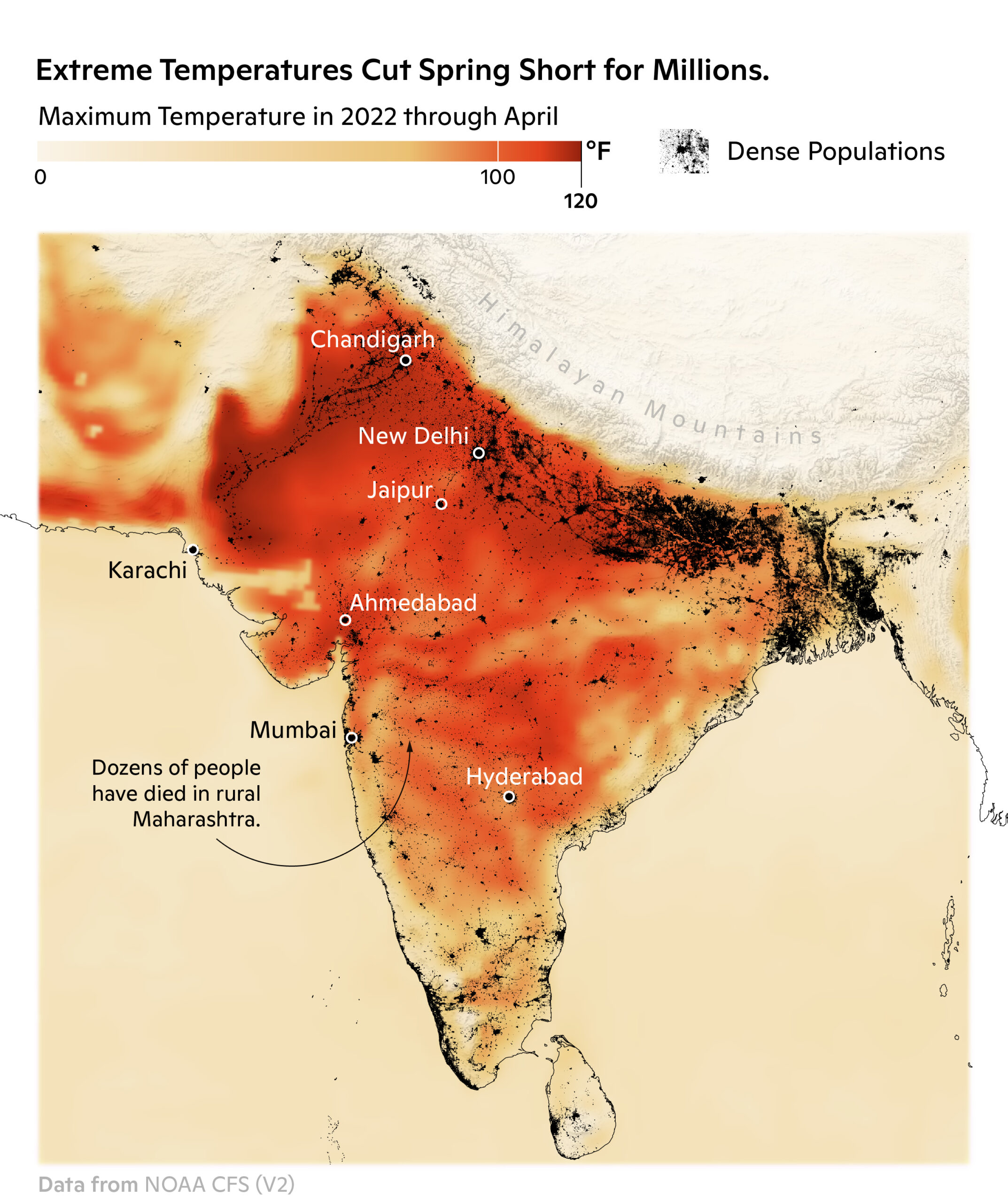
map by Carl Churchill
“The most shocking part for me has been the geographical extent and the duration,” said Woodwell Assistant Scientist, Dr. Zach Zobel in an interview with CNBC.
The heat-related death toll in Maharashtra state, the second most populous state in India, has already reached 25. Heat waves like this one become particularly dangerous when humidity is high—preventing the human body from cooling itself through sweat and evaporation.
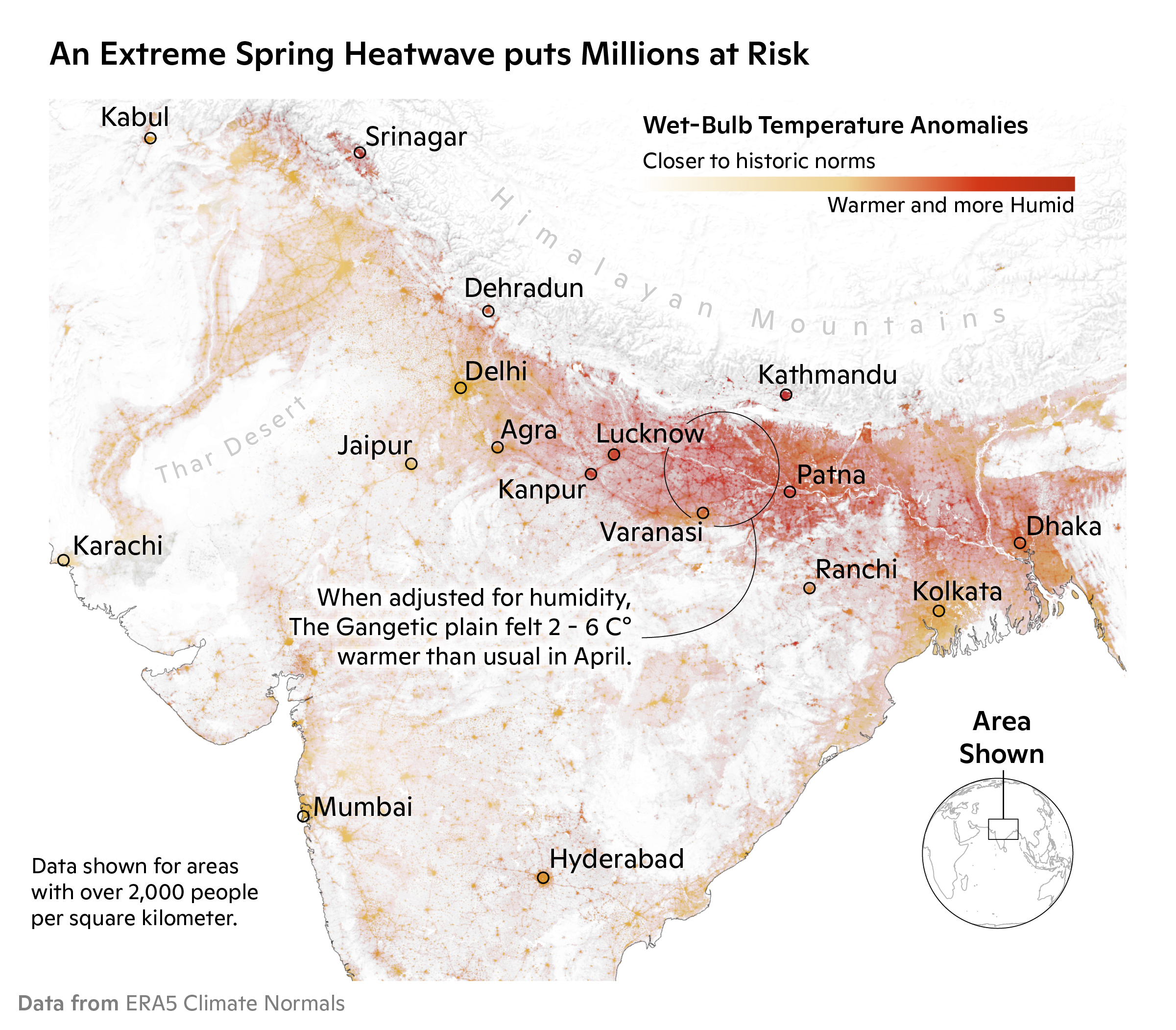
map by Carl Churchill
Earlier and more intense heat waves also have the potential to disrupt India’s crop yields, particularly wheat, which is vulnerable to hot, dry weather. As climate change progresses unchecked, extreme heat waves like this one will become more and more common.
Megafires in New Mexico forcing evacuations
On the other side of the globe, rising temperatures have resulted in a rash of destructive fires well before the usual summer season. The state of New Mexico is currently fighting 20 separate fires in 16 counties. Two, the Hermit’s Peak and Calf Canyon fires, recently merged into the state’s second-largest wildfire on record, which has been burning now for more than a month.
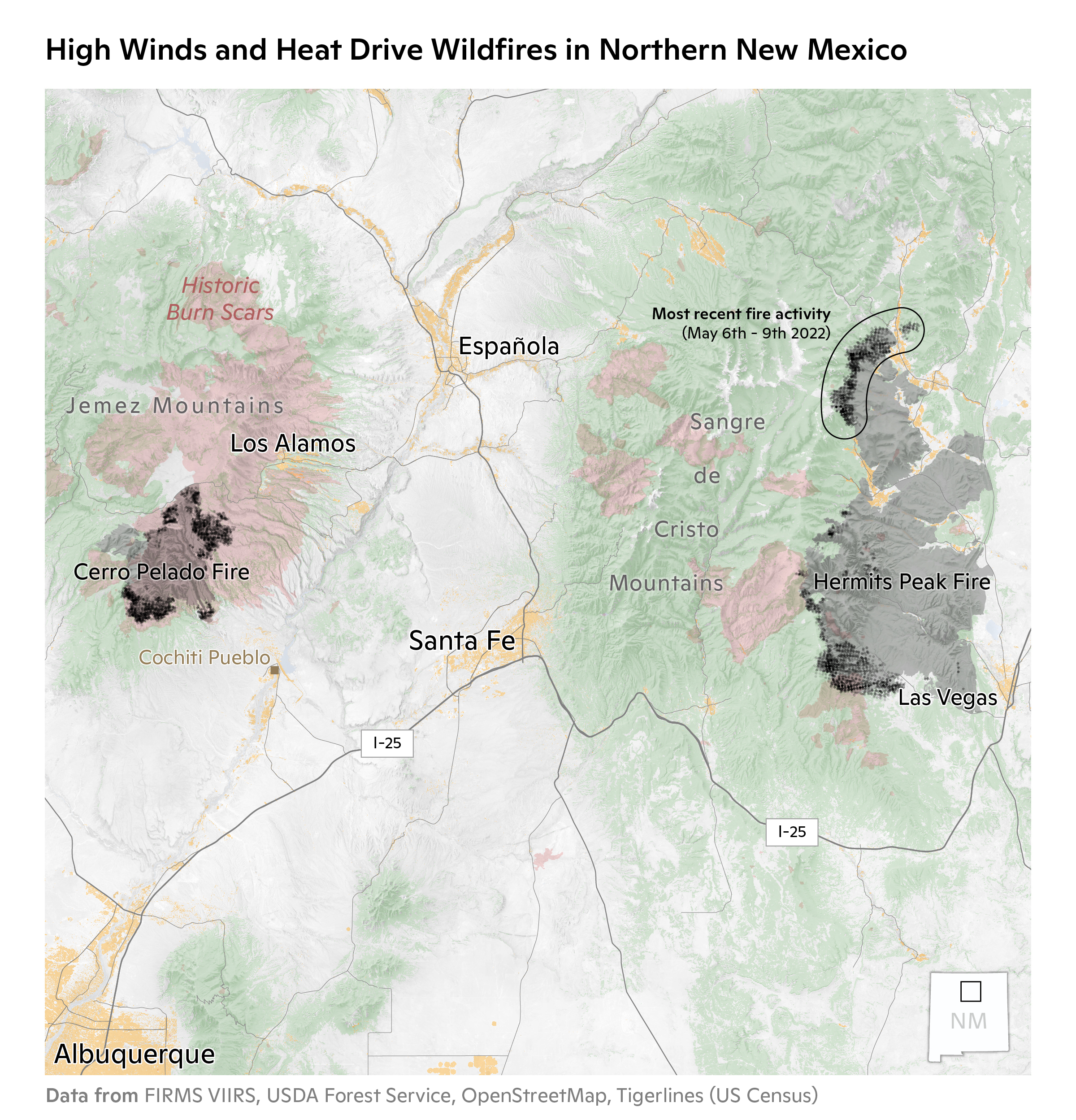
map by Carl Churchill
The merged “megafire” has destroyed at least 276 structures and forced the evacuation of nearly 13,000 residences.
New Mexico is used to a fire season that starts in May or June. Climate change is making out-of-season fires more common and big fires were seen this year in Colorado and California as early as December and January. The United Nations declared a global wildfire crisis in February.
Climate change is warming and drying out western U.S. states, increasing the number of “fire weather days.” This has made fire management harder, limiting the possible timeframe for prescribed burns that reduce fuel loads. Intense winds also played a large role in fanning the New Mexico fires, one of which began as a prescribed burn that escaped.
Heat rising, summers lengthening with climate change
As temperatures rise, the risks from deadly heat waves and wildfire are growing. Fire seasons and extreme heat seasons are lengthening, frequently starting earlier and ending later, giving the land no time to recover from dry winters or the prior year’s heat. The response to both the fires in New Mexico and heat in India and Pakistan is the same—rapidly reducing global emissions by 15% every year to hit the IPCC target of 1.5 degrees of warming.
“There is no question that heat waves are made worse by fossil fuels and climate change everywhere in the globe,” said Dr. Zobel. “India and Pakistan are two of the hottest places in the world and will likely continue to see heat waves of this magnitude and worse over the next several decades.”




